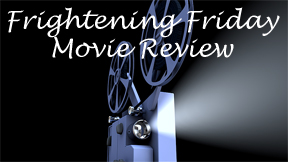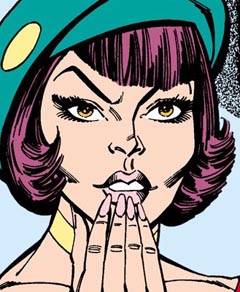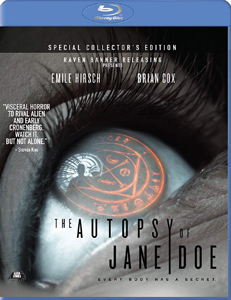Corpses and autopsies are unsettling to the layperson, but “The Autopsy of Jane Doe” (2016) puts us at ease in the beginning. If there’s such a thing as a mom-and-pop funeral home and mortuary, we get one here. It’s run by father Tommy (Brian Cox) and son Austin (Emile Hirsch).
While they are at pivotal points in their lives – the mother recent died, and the loyal son secretly doesn’t want to take over the family business – uncovering CODs (causes of death) truly is a job to them. They cut open bodies with pleasant radio tunes playing, and – while they understand this will never be a normal job – they’re good at it. And bodies are just bodies, after all. Except, perhaps, for this Jane Doe.
Single-setting scares
Director Andre Ovredal (“The Last Voyage of the Demeter”), working from a tight and intriguing script by Ian Goldberg and Richard Naing, crafts a rich horror film in basically one setting. It’s an evocative one. The autopsy room is in the home’s basement, which serves as the professional location.

“The Autopsy of Jane Doe” (2016)
Director: André Øvredal
Writers: Ian Goldberg, Richard Naing
Stars: Brian Cox, Emile Hirsch, Ophelia Lovibond
At the bend of a hallway is a convex mirror, practically for the purpose of seeing people coming; stylistically for the purpose of showing creepy reflections around the corner.
As Cox does his usual solid acting where he’s darkly fascinated by the mysterious nature of the titular corpse, and Hirsch plays a likeable young man learning a trade, Ovredal reminds us of how directing plays a big role in acting, too. This is via the performance (I thought about giving the word quote marks, but decided not to) by Olwen Kelly as naked corpse Jane Doe.
Believably looking human, not prop-like (practical effects are smoothly blended when the autopsy begins), Jane Doe is treated to regular camera-cuts back to her face. Although her expression remains appropriately dead, we’re encouraged to think about those milky grey eyes perhaps springing to life as the coroners make their odd discoveries on, in, around and about the body.
Tommy opens Jane’s mouth and it stays that way because it’s a corpse, but the lingering camera invites us to think of it as a scream.
Mystery from beyond
Ovredal gets a lot out of a little, and accents the mystery with rolls of thunder from the outside. Because of the opening sequence where we’re reminded that the dead can’t hurt us – complete with Austin playing a light prank on girlfriend Emma (Ophelia Lovibond) before he has to shoo her off – the film doesn’t slather on the creepy aspects of a morgue.
As such, there’s room for our brains to think in mystery-solving terms as father and son discover an ancient scroll in the stomach (to name just one of the oddities) and try to decipher what it means.

When the answers arrive – amid an abrupt shift in tone from mysterious to scare-fest – they mostly live up to the questions. Goldberg and Naing have something to say about the connection between mind, soul and body as the revelations give “Jane Doe” historical and timeless heft. (The film is contemporary, but the country setting gives it a throwback vibe.)
The writers take the staple ghost-story theme about how trauma can linger, and force Tommy and Austin to confront it. Although the scares are good – including one moment where I legit flinched – “Jane Doe” doesn’t drift from the father and son and the increasingly weighty mystery.
Meanwhile, Ovredal’s direction combines with the well-crafted mystery to make a corpse into a character. “The Autopsy of Jane Doe” is in some ways old-fashioned horror – and surprisingly not too hard to watch if you’re uncomfortable with autopsies. (It’s not grosser than what you’d see in, say, “The X-Files”; there’s simply more screen time spent on it.) But that trick of character creation from the beyond is something you won’t see in any old film.

